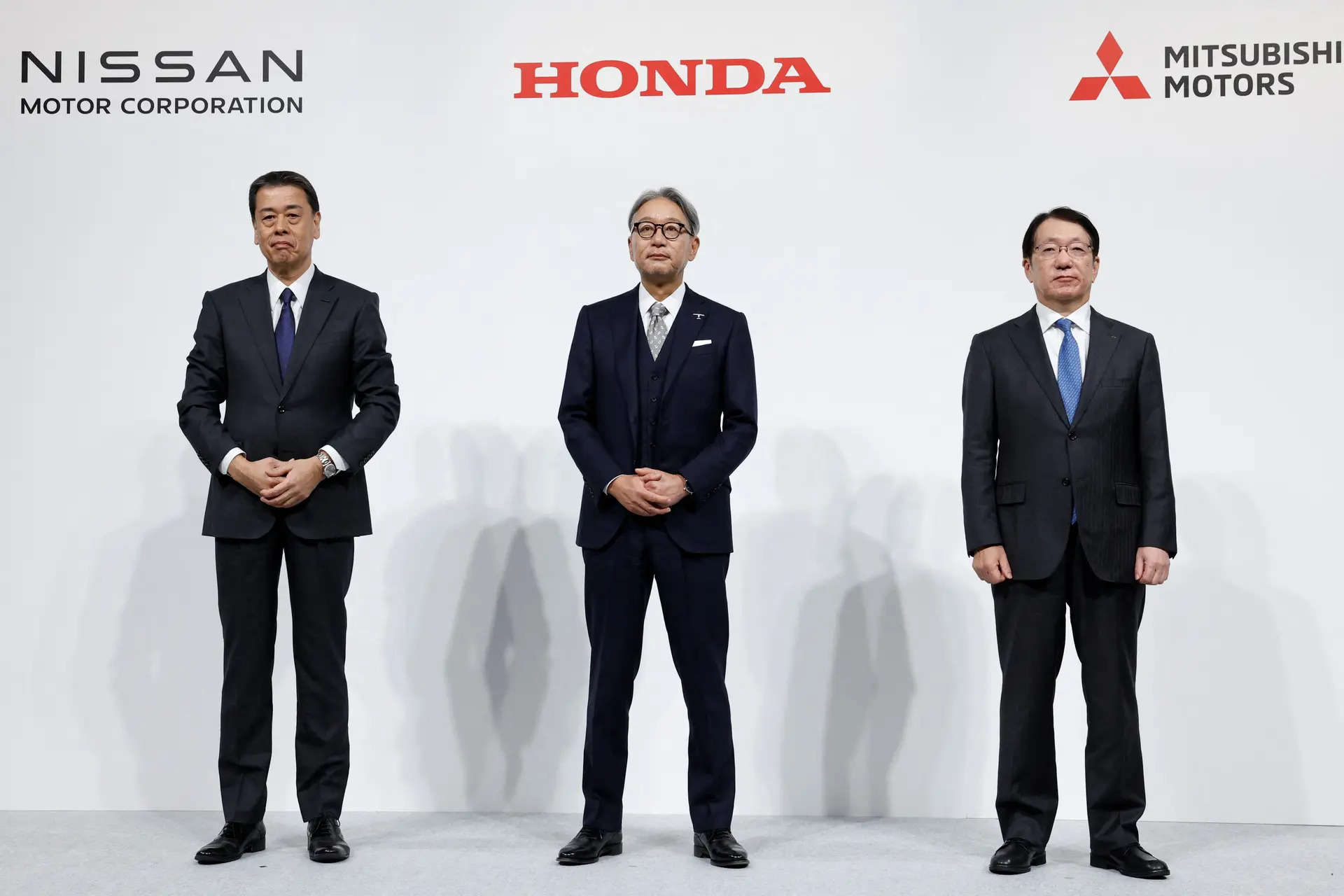New Delhi: Japanese automakers Honda Motor Company Limited and Nissan Motor Company Limited on Monday officially announced the signing of a memorandum of understanding (MOU) to initiate discussions regarding a potential business merger. The automakers said they aim to become a “world-class mobility company” with sales revenue exceeding 30 trillion yen and operating profit of more than 3 trillion yen.Additionally, Mitsubishi Motors has signed a three-party MoU with the two companies for its potential participation in the merger. The final decision regarding Mitsubishi’s involvement is expected to be made by January 2025.
Honda and Nissan plan to complete the talks by June 2025 when they will sign a definitive agreement. Following this, they will establish a joint holding company through a joint share transfer, which will become the parent company of both automakers. Honda will appoint the majority of the holding company’s board.
“This business integration will not only bring together the two company’s automobile businesses, but also include the world’s best motorcycles, which is Honda’s strength, as well as a wide range of mobility business, including car products and aviation,” Toshihiro Mibe, Director, President and Representative Executive Officer, Honda Motor Company said, during a joint press conference.
Makoto Uchida, Director, Representative Executive Officer, President, and CEO of Nissan Motor Company, emphasized that the competitive landscape is rapidly changing and with new players entering the market, making economies of scale is increasingly important. He acknowledged that, given the long history of each company, there would likely be challenges in the process of business integration talks. However, Uchida expressed confidence that the companies could overcome these obstacles and build one strong, unified team.
Amid a sales slump in China and the US, Nissan Motor has been struggling to reduce costs by USD 2.6 billion in the current fiscal year. The company has also revised its annual profit outlook, cutting it by 70%. Additionally, Nissan has announced plans to reduce its global manufacturing capacity by 20% and lay off 9,000 employees.
Nissan, in its vulnerable state, never fully recovered from the turmoil that followed the 2018 ouster of former chairman Carlos Ghosn and the subsequent scaling back of its partnership with Renault SA.
Takao Kato, Director, Representative Executive Officer, President & CEO of Mitsubishi Motors Corporation, noted that the scale of business and the markets where Mitsubishi Motors is strong differ from those of Nissan and Honda.
While Nissan and Honda are expected to lead and focus on developing new technologies, including Software-Defined Vehicles (SDV) and software, Mitsubishi Motors anticipates contributing to the global business of the two companies by leveraging its expertise and experience in areas where it excels. These include operations in ASEAN markets and technologies for vehicles such as compact pickup trucks, he said.
Listing of new company
Once formed, both Nissan and Honda will operate as fully owned subsidiaries of the joint holding company. Despite this new structure, the companies intend to continue coexisting and developing their respective brands independently, ensuring equal growth for both Honda and Nissan.
The shares of the newly established joint holding company are planned to be listed on the Prime Market of the Tokyo Stock Exchange (TSE). The listing is scheduled for August 2026.
With the new listing, both Nissan and Honda will become wholly owned subsidiaries and are scheduled to be delisted from the TSE. However, shareholders of both companies will still be able to trade shares of the joint holding company, which will be issued during the share transfer, on the TSE.
Other details of the joint holding company, including the name, registered office, representatives, executive composition, and organizational structure will be determined by the time of the execution of the definitive agreement.
In March this year, Honda and Nissan said they were considering cooperation on electrification and vehicle intelligence. In August, they agreed to carry out joint research in the area of platforms for next-generation software-defined vehicles (SDVs).

